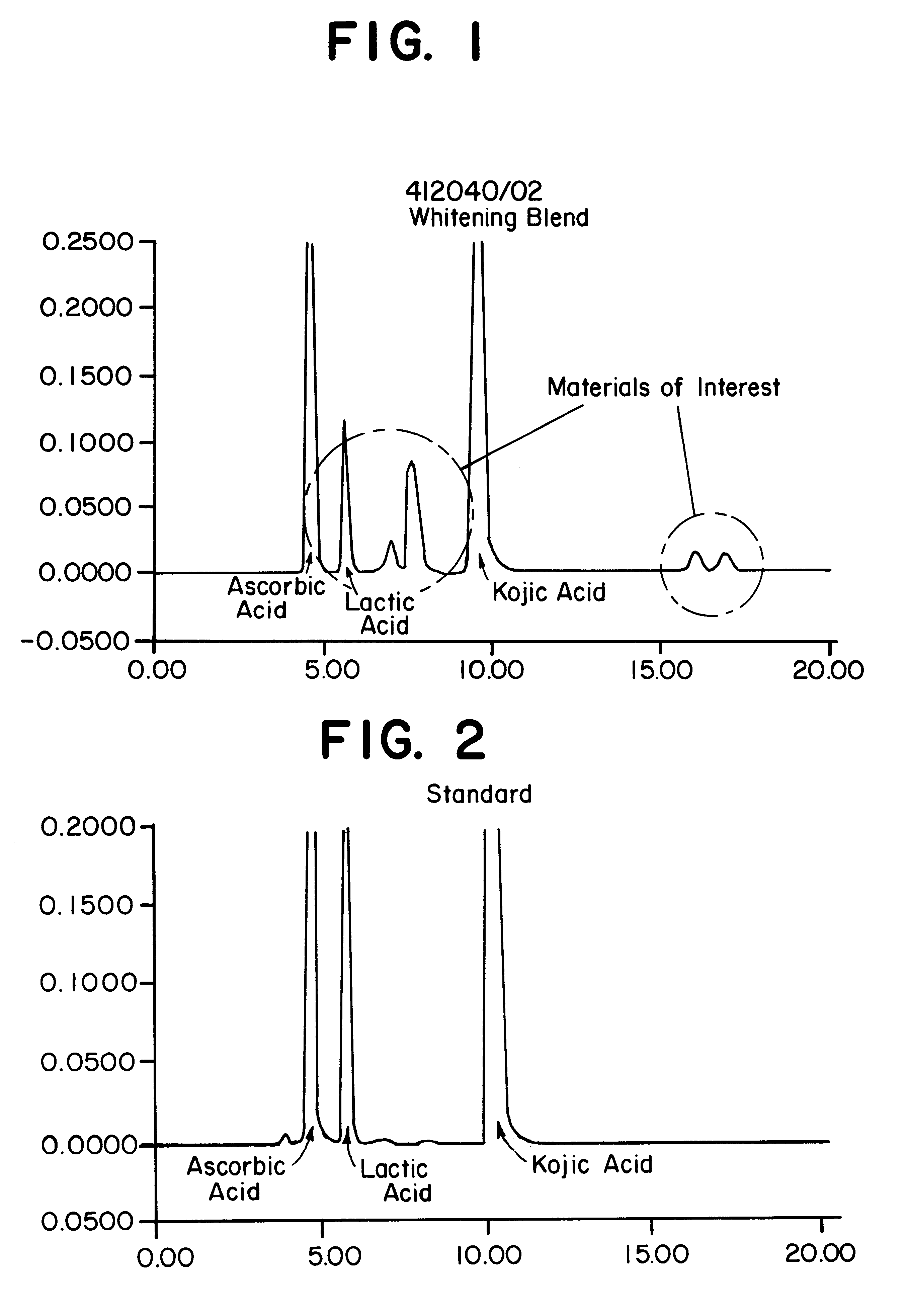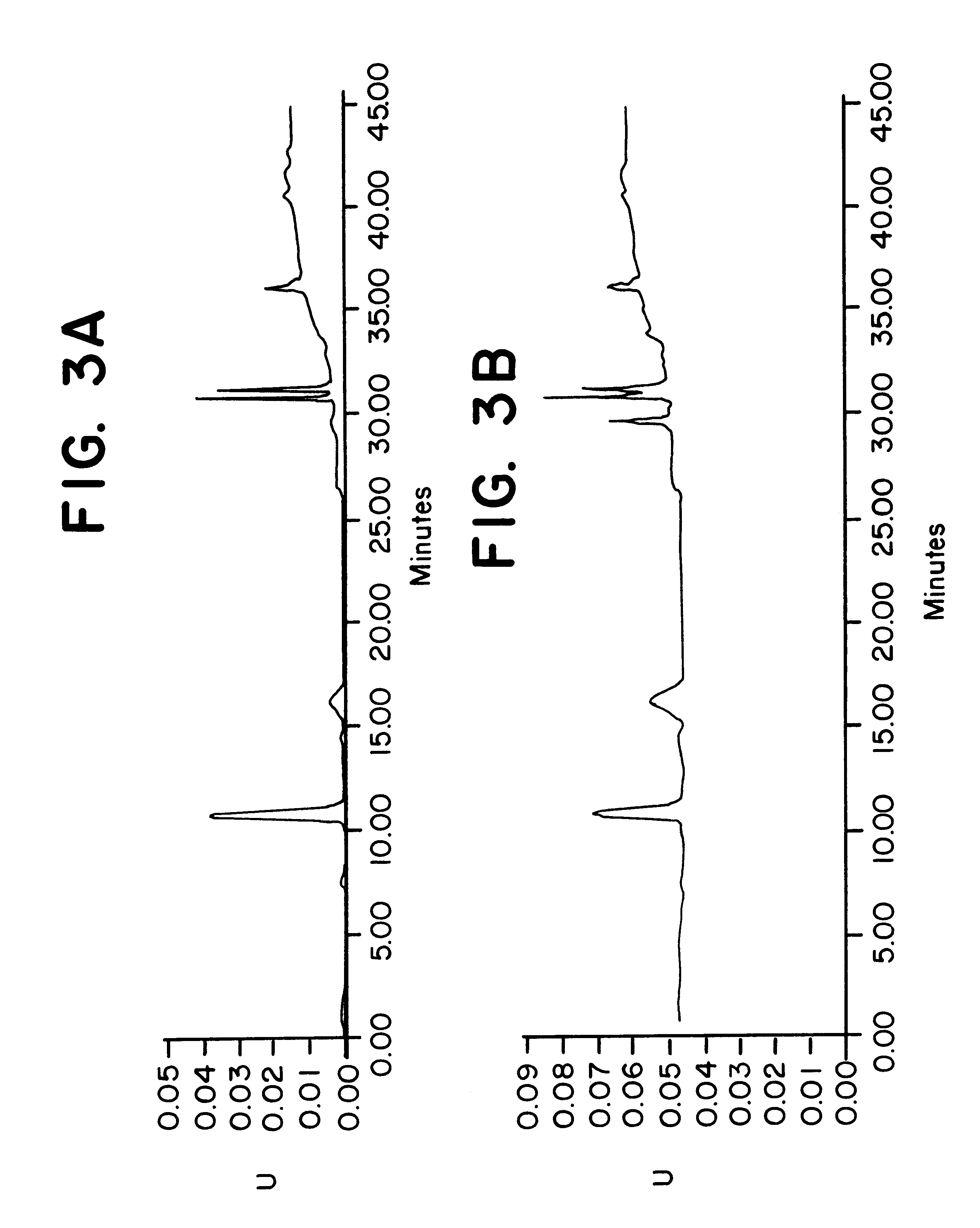Skin whitening agents
- Summary
- Abstract
- Description
- Claims
- Application Information
AI Technical Summary
Benefits of technology
Problems solved by technology
Method used
Image
Examples
example 2
To determine the formation of stable esters, lactic acid was mixed with glycerin, ascorbic acid, or kojic acid individually and heated to 110.degree. C. with mild agitation for a desired time period. It is believed that lactic acid forms esters with itself, resulting in dimers, glycerin, ascorbic acid, or kojic acid via Fischer esterification when subjected to moderately elevated temperatures in an anhydrous environment. Progress of the reaction that occurred was monitored by reversed phase HPLC with photodiode array detection.
The chemicals used in Example 2 were: lactic acid (90%, Fluka); glycerin (99.5%, Aldrich); ascorbic acid (99+%, EM Industries); kojic acid (Sigma); de-ionized water; methanol; acetonitrile (both HPLC grade, EM Sciences); and phosphoric acid (85%).
A programmable hotplate / stirrer (PMC 720 series) was used. The HPLC system consisted of a Waters (Milford, Mass.) model 600e quaternary gradient controller and pump equipped with a column heater, a Waters model 717 au...
example 3
In Vivo Study of the Whitening Agent
Five female volunteers aged 25-30 with mild to moderate uneven skin tone and brown spots were selected by a dermatologist and were enrolled in a 4 week clinical study. A formulation containing 5% of Example 1. The formulation contained the following:
(A) 84.95% Deionized water
0.25% NatroSol.TM. hydroxyethyl cellulose
0.20% Keltrol.TM. xanthan gum
(B) 2.00% Halosol.TM. (1% solution of sodium hyaluronate)
1.00% Phytosol Bearberry glycerin extract
1.00% MicromerolTm glycerin and apple extract (Collaborative Labs.)
0.50% TEA (triethanolamine)
1.00% Licorice
1.00% Germaben II preservative (Sutton)
(C) 1.00% BV 0SE (Vitamin C derivative)
0.10% Vitamin E Acetate, USP
(D) 2.00% Sepigel 305 acylamide copolymers (SEPPIC)
example 1
(E) Example 1
The formulation was applied twice daily to each volunteer on a selected skin area. Photographs of the skin were taken before the first application and at the end of the study. Images were digitized and quantitative information was obtained on the number and intensity of brown spots.
As shown in FIGS. 6A and 6B, a typical area of volunteer's skin before (left side) and after end of 4 week study (right side) of effectiveness of the whitening agent indicates that number and intensity of the brown spots on the skin being reduced upon treatment.
FIG. 7 contains a quantitative analysis of digitized skin images (from FIGS. 6A and 6B) indicating number of brown pixels before after the study.
FIG. 8 shows in vitro tyrosinase activity studies which demonstrate greater than 95% inhibition of tyrosinase activity at as low as 0.03% w / w.
PUM
| Property | Measurement | Unit |
|---|---|---|
| Fraction | aaaaa | aaaaa |
| Fraction | aaaaa | aaaaa |
| Fraction | aaaaa | aaaaa |
Abstract
Description
Claims
Application Information
 Login to View More
Login to View More - R&D
- Intellectual Property
- Life Sciences
- Materials
- Tech Scout
- Unparalleled Data Quality
- Higher Quality Content
- 60% Fewer Hallucinations
Browse by: Latest US Patents, China's latest patents, Technical Efficacy Thesaurus, Application Domain, Technology Topic, Popular Technical Reports.
© 2025 PatSnap. All rights reserved.Legal|Privacy policy|Modern Slavery Act Transparency Statement|Sitemap|About US| Contact US: help@patsnap.com



